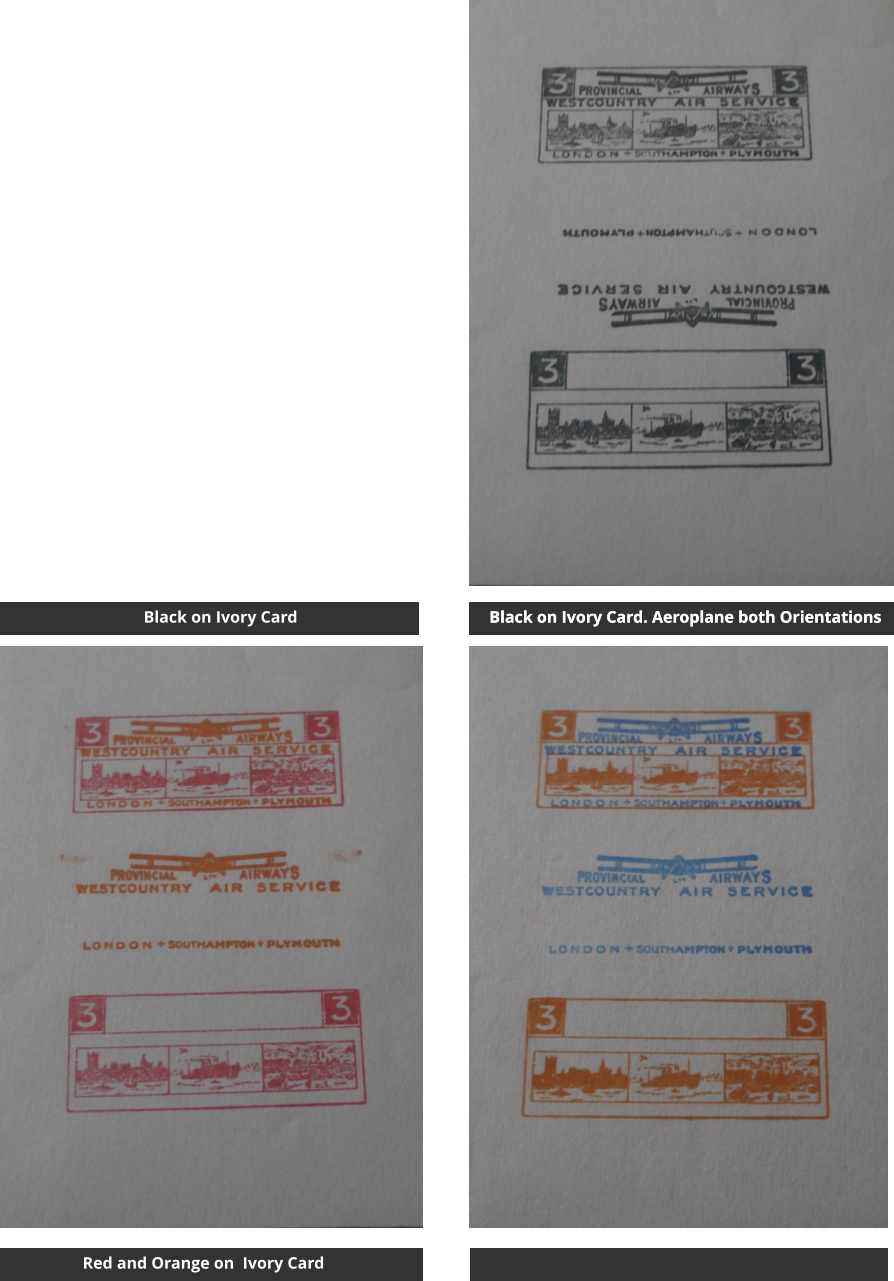
Articles - Lundy Attantic Error
Copyright
© 2022 Robert Farquharson All Rights Reserved
-

British Internal Airmails of the 1930’s
The Lundy "Attantic" Error.
By H. Stanley Redgrove, B.Sc.
In 1937, stocks of the half-penny air stamp issued by Atlantic Coast Air Services being exhausted, Lundy and Atlantic Coast Air Lines which had recently been formed to take over the former concern, issued a new halfpenny air stamp), a view of Lundy with an airplane in flight, printed by Messr’s Wilsons of Leicester in purple, in sheets of 48, rouletted except on margins. A first printing of 500 sheets was made of these stamps on which the name of the company did not appear. Their use was objected to by Mr. Harman, the owner of the Island and a second printing was made in which the name of the company was added around the central design. The rejected stamps were not issued, but a few I understand were used on parcels sent to Mr. F. W. Gade, Mr Harman’s agent in Lundy. Towards the end of 1938 a shortage of halfpenny air stamps occurred and to meet this some of the rejected stamps were overprinted in black with the name of the company in five lines, the overprinting being undertaken by Messr’s H. Pincombe of Barnstaple. According to the Air Transport Company,111 sheets were thus overprinted, making about 5000 stamps in all. The above particulars are abstracted from my “The Airmails of the British Isles," where further details are given. Since passing the final proofs of the book, my attention has been called to a very interesting error of overprint. By a curious coincidence, two events took place within two days Of each other: I acquired a copy of the error on cover, and received an enquiry concerning it from a well-known American philatelist. The error takes the form of the substitution of the letter t for l in " Atlantic," the word therefore reading "Attantic." Mr. Gade, to whom I have communicated with regard to it, states that the error was not noticed at the time, but on examining some sheets, it appears to occur in the last top, third, fifth and seventh horizontal rows. Hence the “Attantic " error is always imperforate on the right-hand side. Mr Pincombe has kindly given me some information as to how the overprinting was affected. The job being so small a one type was set sufficient to only overprint two horizontal rows at a time. This explains the position of the errors on the sheet the compositor having picked up a t in mistake for a l, owing no doubt to a mis-sort in the type. Mr Pincombe is unable to remember if the error was noticed and corrected and if any reader has a block of the overprinted stamps showing a correctly overprinted stamp in one of the above specified positions, I would be extremely obliged if he would be kind enough to let me see it. There is another method for checking up whether the error was corrected, for particulars of which I am indebted to the Rev L. Cheney. The differences were caused by the fact that the original drawings were copied four times and the group of four drawings was used to make one stereo; from which twelve cuts of four stamps was used to make up a sheet of 48 stamps. Distinguishing the types as A, B, C, D respectively, they occur in each sheet as follows: Horizontal rows 1,3,5,7 types A and B alternatively. Horizontal rows 2, 4,6, 8 types C and D alternatively. Hence the attantic error is always on type B and the existence of a type B stamp with an imperforate right-hand edge and the Correct overprint" would prove that' the faulty overprint was corrected. The four types can be easily distinguished by observing the lowest wave line and the bottom frame line, the following differences being shown: Type A: 13 wave crests, wave line merging into margin. B: 16 wave crests, outer frame line broken at right. C: 16 wave crests as Type B, but outer frame line not broken, and a marked dip between 3rd and 4th wave crests. D: 24 wave crests. That the error was in no sense a philatelic stunt is shown by Mr Gade’s reply to my query and by the fact that my flown example was used, not on a philatelic cover, but on a Trinity lighthouse cover containing a communication addressed to the lighthouse keeper at Lundy, and by the further fact that this was sold to me at the same price as a similar cover bearing a normal stamp. The error would appear to be at least twelve times as scarce as the normal stamp, and quite probably is even scarcer.
Articles - Lundy Attantic Error
Copyright
© 2020 Robert Farquharson All Rights Reserved

British Internal Airmails of the 1930’s
Section 5 - Directors Samples
These were printed to submit to the Directors of Provincial Airways to select the final colour combination. Some were put through the press the wrong way round which therefore created an inverted vignette. The errors were thought to have been leaked onto the philatelic market and were not destined for the powers that be. [**NOTE** I suspect this is incorrect. The samples did appear on the market, but they were probably not leaked. The inverted vignette may have been an initial accident, but there were far too many printed for them all to be accidents. I suspect the directors saw the potential in selling these to collectors. In the end they were packaged in packets and sold. (Francis Field). How they were first marketed is not known, but now they are sold as proofs when they are no such thing.]
Blue on Ivory Card





Blue on Ivory Card




































